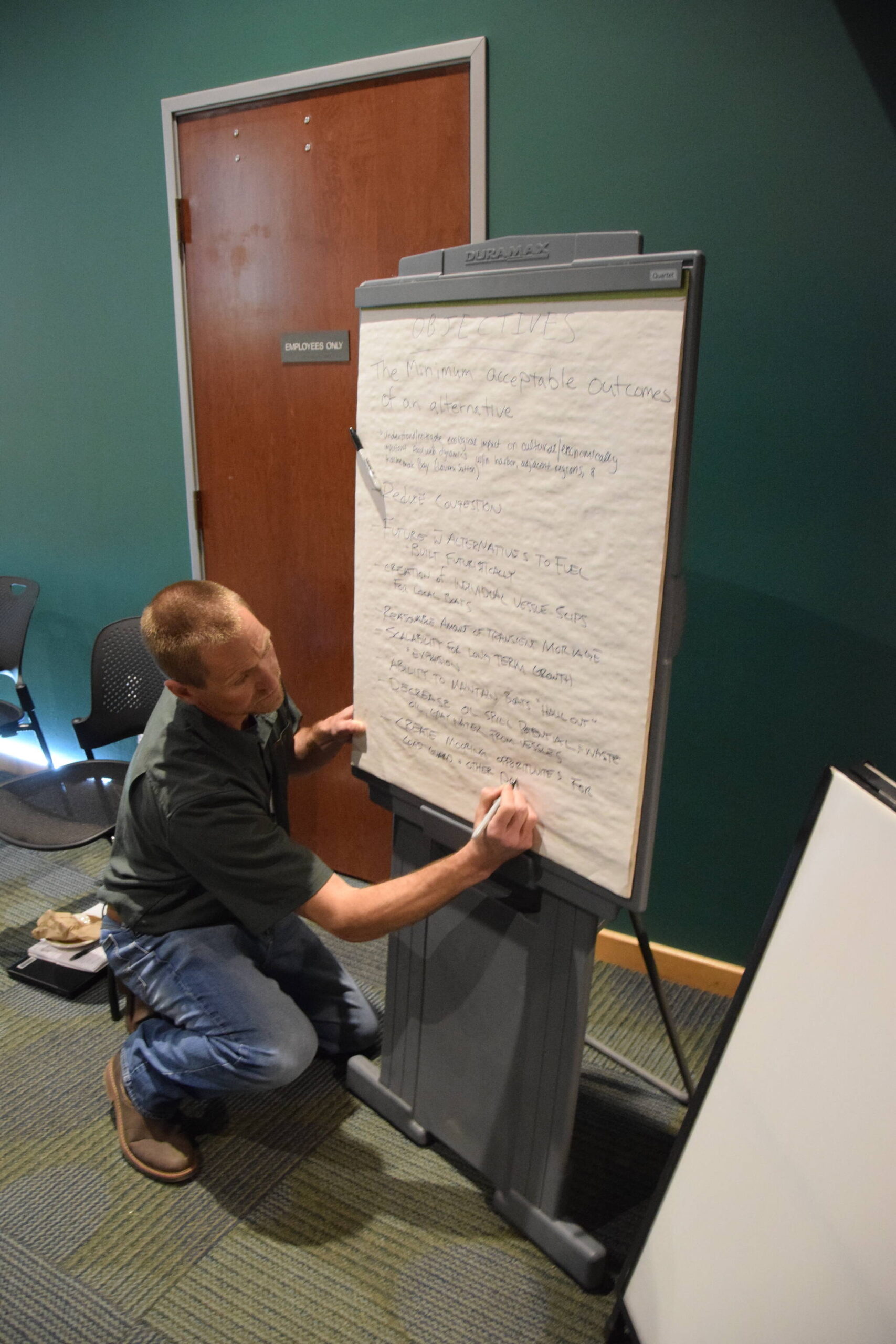The Army Corps of Engineers, Alaska District, held a series of public workshops on the Homer Harbor Expansion Study at the Islands and Oceans Visitors Center from May 17-19
Open to all interested community members, the public work session — dubbed a “charrette” — was the first planning event for the study, which officially started in March 2023 when the City of Homer and corps entered into a cost-sharing agreement for the three-year feasibility study, the City of Homer wrote in a May 4 press release.
The Corps of Engineers conducts design charrettes in the early stages of a general investigation study to gather functional information from customers and stakeholders, assess the project site, develop alternatives to be considered in the scoping phase and allow for public engagement with the corp development team, according to the release.
Homer’s Port and Harbor facility was originally built in 1964 by the State of Alaska as a small boat harbor and has expanded over time to include 930 stalls and 6,000 linear feet of transient moorage. Today the harbor system is working beyond capacity and has more than 415 vessels on a stall waitlist, according to information provided at workshop.
During the work sessions, there were many opportunities for community members with conflicting interests and concerns to express both their opinions and what their vessel needs are.
Issues raised included potential environmental impacts to the marine protected area and species of Kachemak Bay; what harbor growth might mean for community traffic and general business expansion; what is the underlying basic need for more space for current existing number of vessel owners in the community; and safety concerns for having vessels rafted out in as many as five or six deep from the pier and ramps.
About 50 or 60 people showed up on the first day of the study with about as many contributing to the Thursday and Friday components.
Chris Lee, project manager with the Corps of Engineers, said the corps received a request from the City of Homer to initiate a feasibility study to assess navigational improvements for the harbor.
“The harbor is working well beyond its current capacity; the waitlist for slots is huge and there are a lot more boats in there than it was ever designed for,” Lee said.
The USACE planning team is a 13-member project delivery team with people representing different disciplines to consider the various components of the study. The members include: a planner responsible for putting together the report, an economist who will be looking at the fleet spectrum and economic concerns and benefits, and cultural impacts representatives will focus on the social-cultural concerns.
“Getting more into the technical nuts and bolts, such as scaling and rock measurement, we have a hydrology team member, a geotechnical specialist to analyze placement conditions and we have an environmental specialist,” Lee said.
The initial charrette is just the beginning of a three-year project.
“We are at the very beginning of the process,” Lee said. “We signed the agreement with the city on the 29th of March. That’s when the clock started ticking.”
Lee said a major milestone the public needs to track is the release of the draft report.
“We will go through all of the alternatives in front of us and weed out what is and is not feasible, consider which are the best options and what fits the needs of the entire spectrum. It is an iterative process until we come up with the single alternative supportable by the federal government that suits the environmental and economic needs of the community. That will be the tentative draft plan which will then require a technical, public and agency review before it can be put into place.”
There will be future opportunities for public comments to be made.
In the first day of the meeting the primary intended outcome was to clearly understand the study, including the problem, objectives, opportunities and constraints.
The second day of the event focused on the formulation of design alternatives.
“Today we are going to look at what needs to go into the options for this,” said corp team member Kim Graham. “I know there has been a lot of design development consider in the past for this project and I want to clarify that the Corps of Engineers is looking at this as a blank slate. We are here to listen to the community. We don’t have any design in mind or what this needs to look like. We are here to listen and fill it in.”
The third day of the meeting reviewed the 10 alternatives developed, which ended with 13 possible alternatives for screening, including a no action plan.
Community members had the opportunity to express preference for these by viewing the drawings and placing stickers on those they found most preferable.


